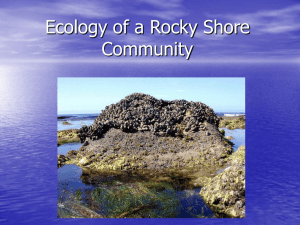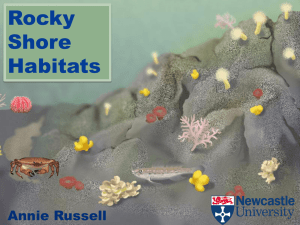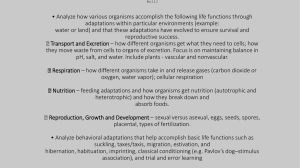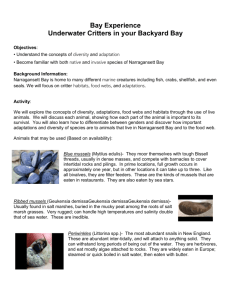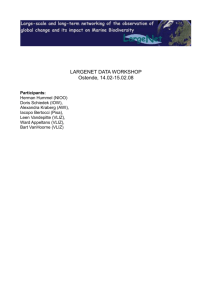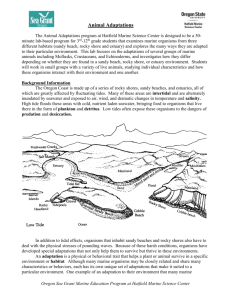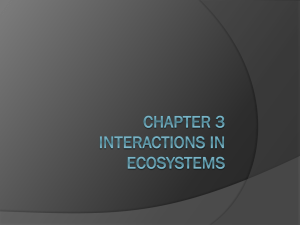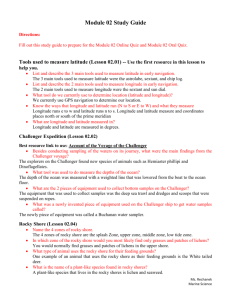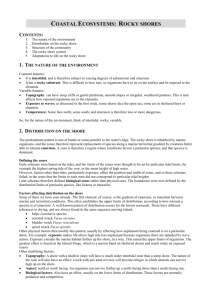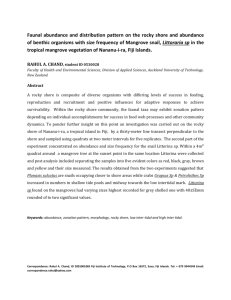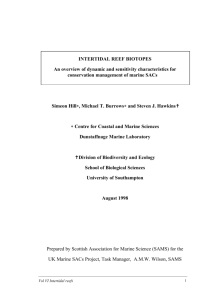Ecology of a Rocky Shore Community
advertisement
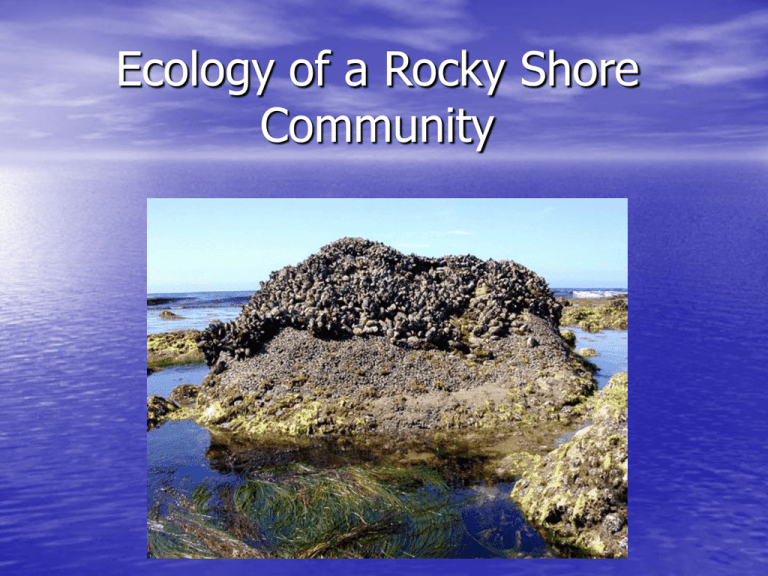
Ecology of a Rocky Shore Community Zones of Life along a Rocky Shore • Why are some animals and plants located in special zones and not all over? Adaptations for life on a high energy rocky shoreline • High energy waves • Low tide exposure Animals on a typical New England rocky shore • Asian Shore Crab • Periwinkle snails • Blue Mussels • Purple Sea Urchin • Rock Barnacles • Common Sea Star Algae on a typical New England rocky shore • • • • • Fucus Knotted Wrack Ulva Chondrus Kelp Adaptations to life on a rocky shore line Adapting to Wave Shock • Barnacles • Cements shell to rock • Snails • Use a suction cup like foot Adaptations to Wave Shock • Sea Stars • and Urchins Tube feet with suction cup ends Adaptations to Wave Shock • Blue Mussels • Byssel Threads ( strong cables) Adaptations to Wave Shock • Crabs and Lobsters • Wedge into rock spaces • Hide under rocks Adaptations to Wave Shock • Sea Weeds (macroalgae) • Hold fasts attach to rocks Rocky shore animal feeding adaptations • Barnacles • Filter food with • • • • feathery legs (filter feeder) Snails Scrape food with a radula - tongue with teeth (grazers and carnivores) Sea stars Use tube feet and stomach Reproduction adaptations • Barnacles are hermaphrodites • Each barnacle has both male and female • • • • reproductive organs Marine snails mate and deposit egg cases Sea stars and Urchins broad cast eggs and sperm into the water Marine Arthropods like crabs and lobsters mate. Female attracts male using pheromones. After the female molts and mates with the male, eggs will later be deposited on underside of her abdomen and carried until they hatch. • Lobster with eggs • Green crab with eggs Ecology • Ecology – the study of the relationships between living organisms and with their environment. • The marine environment for all marine life is composed of the nonliving environment, or abiotic factors • and the living organisms, or biotic factors What are the abiotic factors that these tide pool organisms deal with every day? • How about organisms in this deep sea vent community? What are the abiotic factors here? The biotic factors are the organisms and how they interact with each other. • Not a good day for the Sea Lion Biotic factors in the marine environment Plankton • Phytoplankton Zooplankton Levels of Organization • There are four distinct levels of organization in the biotic sector of the environment: • The individual organism • The population of that species • The community of organisms that species exists within • The ecosystem the community exists in along with the abiotic factors affecting those organisms The individual organism (species) • Littorina littorea – the Periwinkle Snail • How is this animal adapted to its environment? The population of Periwinkle Snails • How do these snails interact with each other? • Competition? • For what? The community of orgnanisms that the Periwinkle snails live in • How do these organism interact with each other? A Rocky Shoreline Ecosystem The Flow of Energy and the Recycling of Nutrients • All the living organisms in this rocky shoreline • • • community require energy for survival. How is this energy acquired and how much is passed on? How do these organism obtain atoms and molecules for growth and repair? and how are these nutrients passed on?
